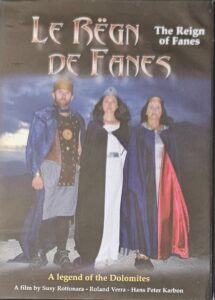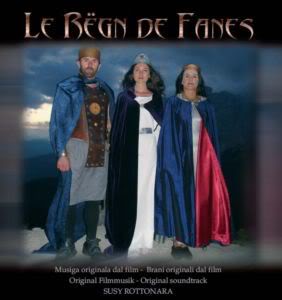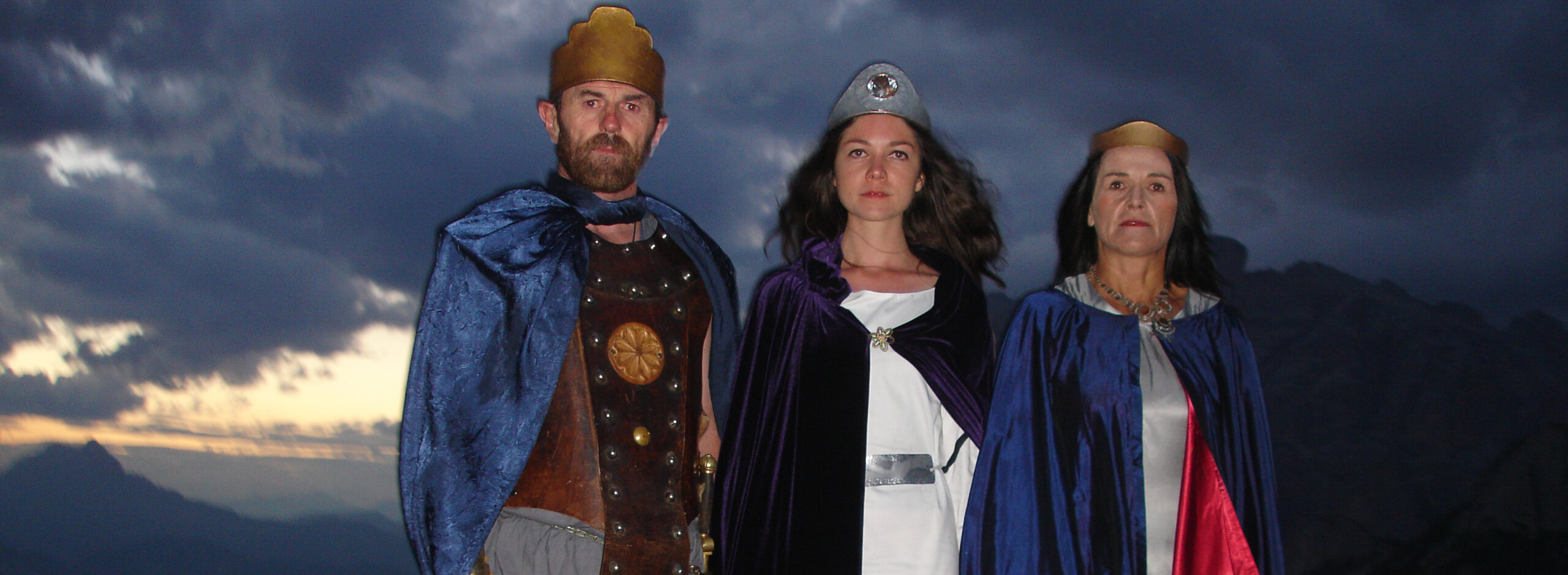THE FILM AND THE LEGEND read more…
The first aim of this cultural project is to give to one of the most precious heritages in oral Ladin dolomitic tradition -that is also characterised by various classical themes- a new and privileged means of transmission through the filmic performance, achieving a living preservation of the legend and an efficacious reception both by Ladin people and by a larger public. Interpretation and adaptation of the legend are inspired by the longing for the best presentation of the plot in today’s reality, deeply bound to the various dolomitic settings as well as to different elements and colours in mountain’s nature.
The film was shot in summer 2005 in some of the most fascinating dolomitic scenaries, such as the Fanes’ plateau, the S.Nicolò valley in Fassa and Lake Braies.
Except of the three promoters of this cultural project there were involved in the production of the film almost hundred volunteers -as principal actors, extras, collaborators- from the vallies Badia, Gherdëina and Fascia. In the film they speak their own Ladin idiom, so that it results a meeting of linguistic varieties of this very ancient alpine language, Ladin, yet spoken today and acknowledged as minority language. Indeed the presence of different Ladin idioms in the film shows in most of cases a correspondence between the contemporary Ladin idiom spoken by the actors in today’s reality and their place of origin in the legend: the king of Fanes speaks mareo (Ladin of northern Badia valley), the queen of Fanes and Dolasila badiot (Ladin of southern Badia valley), Ey de Net, the prince of the Cajutés and the chiefs of Fanes’ neighbour people fascian (Ladin of Fassa valley), Spina de Mul and Tsicuta gherdëina (Ladin of Gherdëina valley).
Also the film-music was realized following a particular aim: there were involved musicians from the valleys Badia -first of all members of the band of Badia with the conductor and co-responsible for the arrangement Fridl Pescoller-and Gherdëina . The music is played with instruments that should remind of ancient times -such as wind instruments and percussions- and the female voice (Susy Rottonara, soprano) characterises the quite complex figure of Dolasila / Lujanta, expressing her feelings about the different happenings in the legend.
GALLERY
DVD in original Ladin language with subtitles in English -PAL / NTSC

Film music Le Rëgn de Fanes
CD

DOWNLOAD ALBUM
